The collapse of the Reichbrücke on 1 August 1976 shocked not only the Viennese public but every company responsible for maintaining bridges in Europe. The collapse of the chain bridge built in 1937 highlighted the need for the regular maintenance of bridges.
The Budapest Council, responsible for maintaining bridges in the capital was also quick to learn from the event and began a bridge renovation project. As part of this, all bridges in Budapest were inspected in detail, and required renovations carried out.
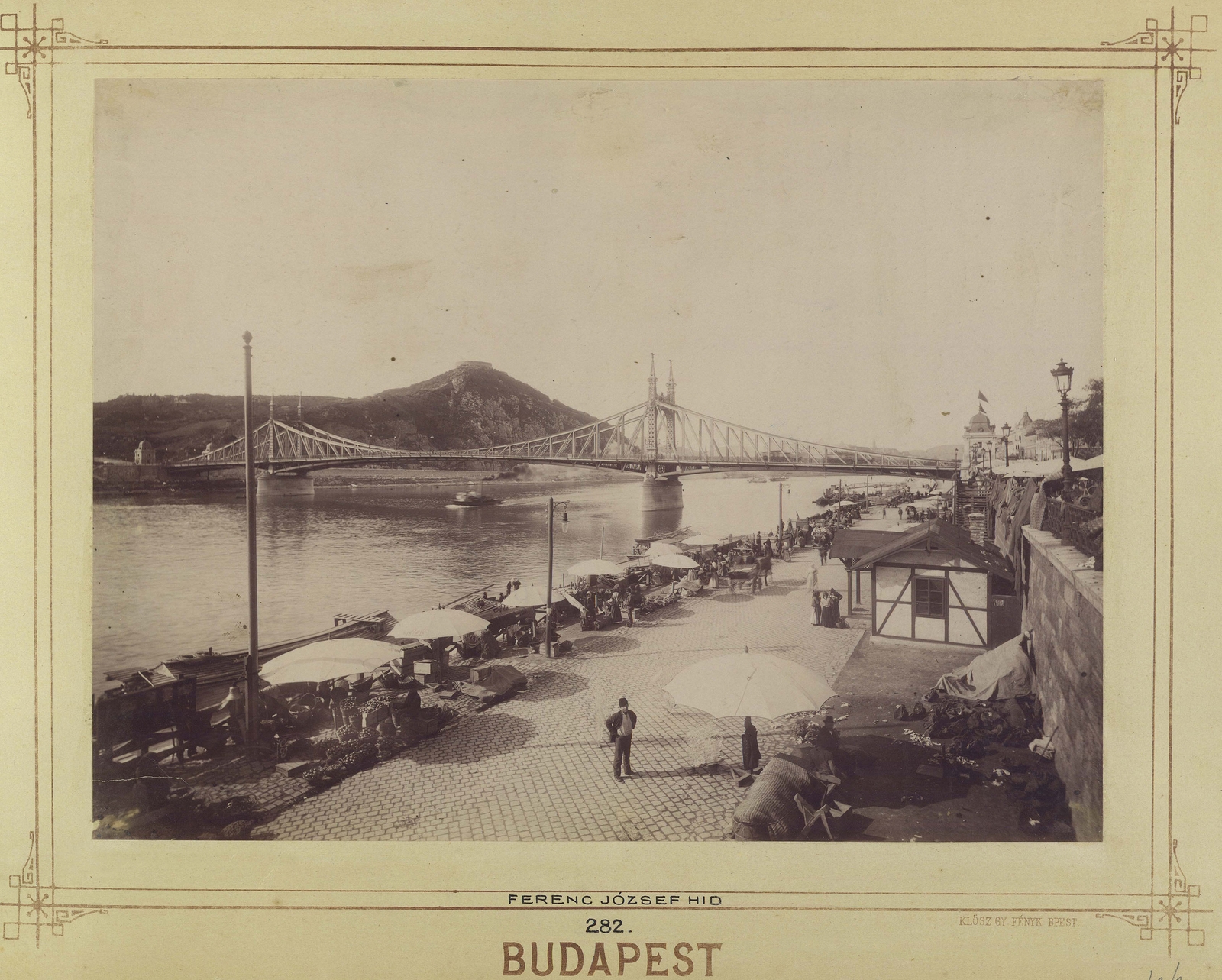 Franz Joseph Bridge shortly after being opened around 1900 (Photo: Fortepan, Budapest Archives. Reference No.: HU.BFL.XV.19.d.1.08.086)
Franz Joseph Bridge shortly after being opened around 1900 (Photo: Fortepan, Budapest Archives. Reference No.: HU.BFL.XV.19.d.1.08.086)
The original schedule slated Szabadság Bridge for renovation between 1981 and 1983, after repairs to Petőfi Bridge had been completed and Árpád Bridge widened. However, when a deformation was found on the abutment on the Pest-side of the bridge, supports had to be installed under the structure.
This changed the plans, prioritising repairs to the oldest bridge structure in the city. Significant parts of Szabadság Bridge are elements of the original structure, unlike other bridges which were renovated more recently. (The oldest elements of the Chain Bridge were installed during the 1914–-1915915 reconstruction.)
While German troops did blow up the bridge in 1945, only its central portion was damaged. The pillars and shore anchors stayed standing. Smaller renovation works were completed in the 1960s. A major review of the structure was conducted alongside a repainting in 1965–1968. The tram tracks were replaced in 1969, and the road pavement repaired, but no changes were made to the structure itself.
Built according to the plans of the brilliant Hungarian bridge engineer János Feketeházy, Szabadság Bridge is a unique structure. Designed to imitate a chain bridge, the structure is actually a cantilever truss bridge. Its two towers and main span are not firmly fixed but can move. The cantilever arms projecting from these do not meet in the middle but support a central suspended span of the bridge. This 47-metre central span and the rest of the structure is supported by two massive 609-tonne counterweights built into the anchors of the bridge.
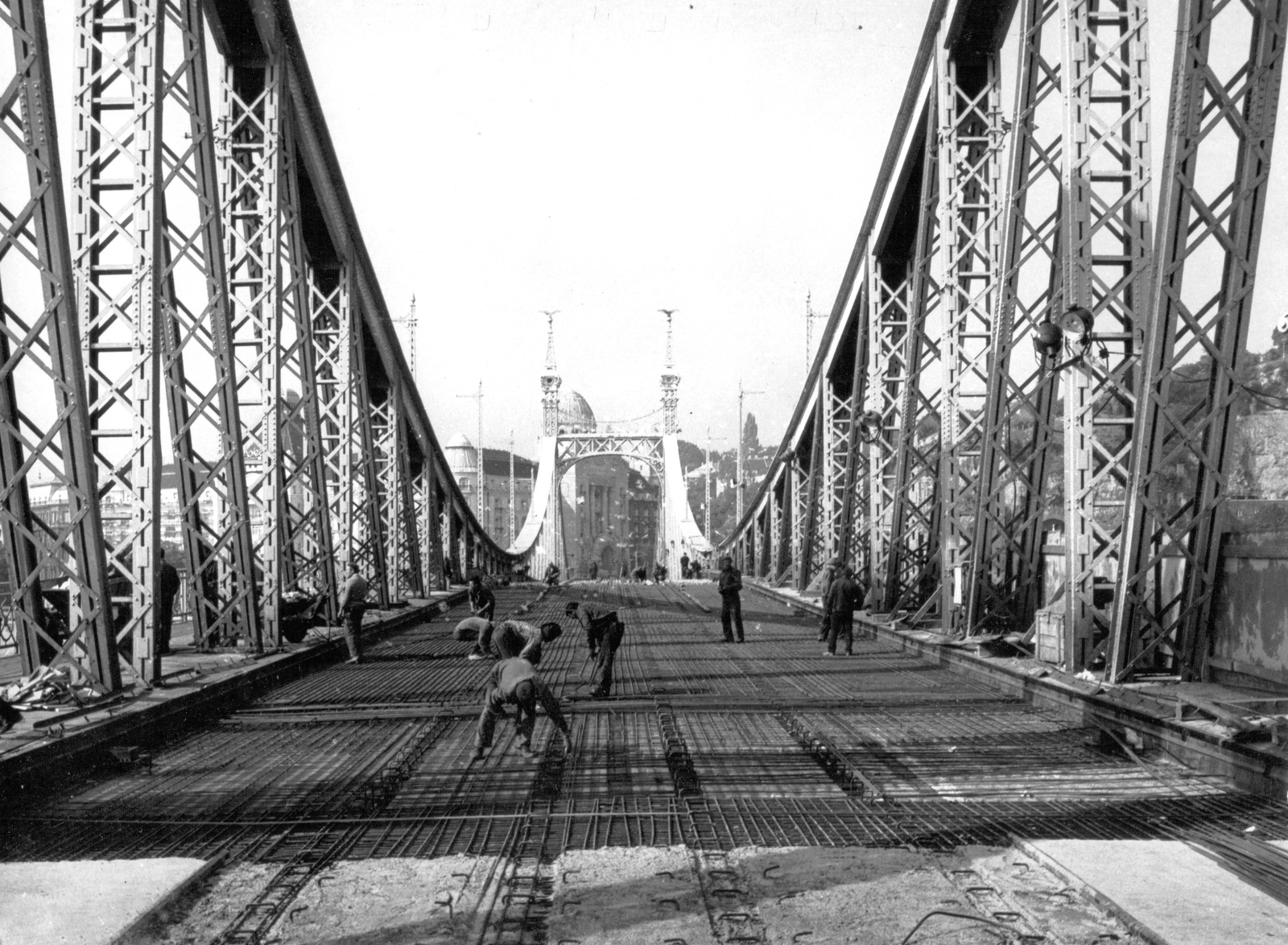
A new roadway under construction (Photo: Fortepan, Ferencváros Local History Collection)
The deformation found in the counterweight housing within the Pest anchor had also damaged the roadway. Eventually in 1979 experts decided that the renovation could not be delayed any longer and began work in 1980.
Work began on 27 February 1980. The bridge was closed to road traffic; only pedestrians were allowed to cross. Parts of the original and 1946 road structure were destroyed and replaced with a new reinforced concrete roadway. The counterweight housings were also opened for the first time since 1896, which gave builders a glimpse of the bridge's original colour. The roadway was paved with asphalt, and public lighting on the bridge was replaced with mercury vapour lamps.
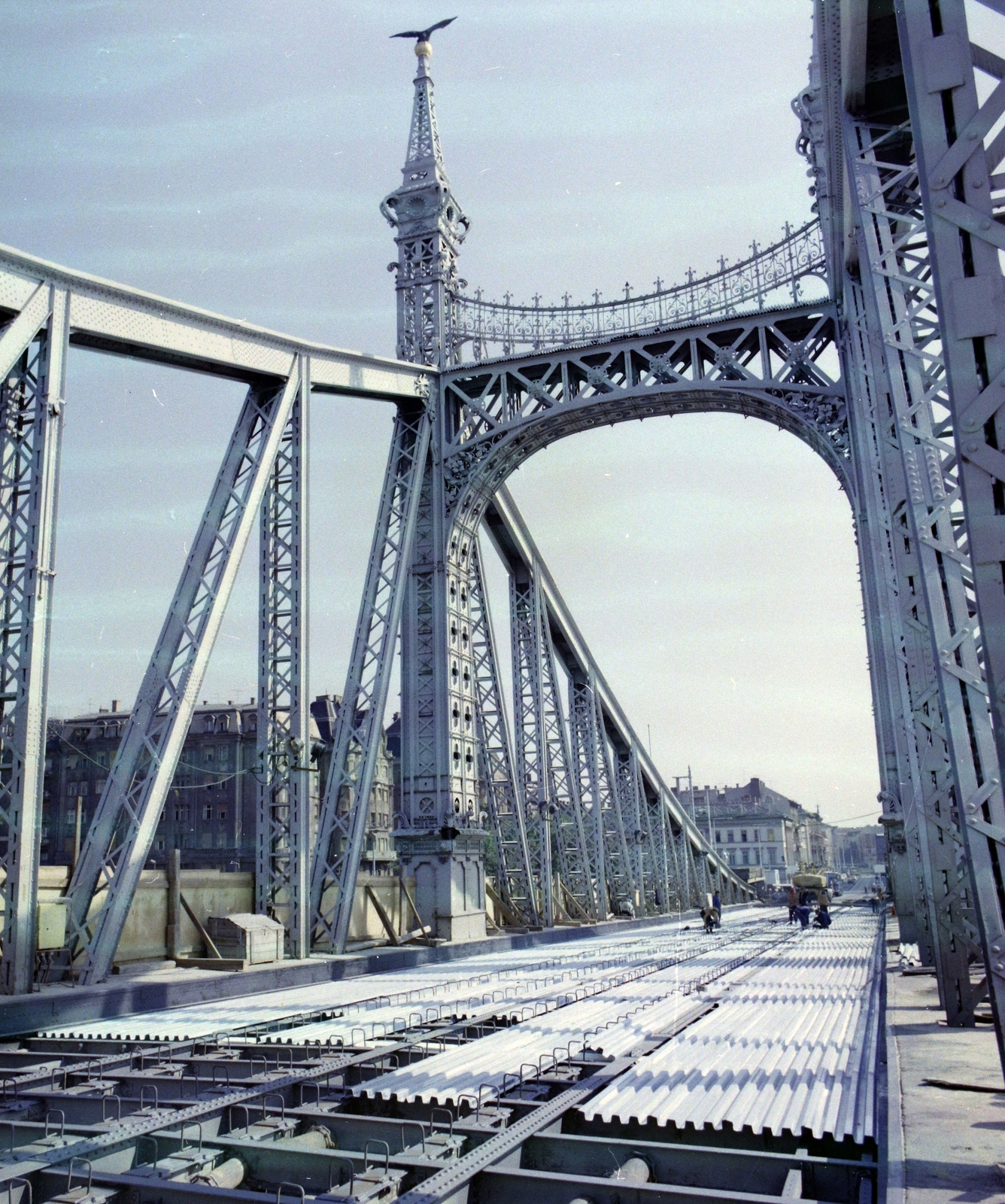 Trusses support the roadway. The bridge still painted grey (Photo: Fortepan, Uvaterv)
Trusses support the roadway. The bridge still painted grey (Photo: Fortepan, Uvaterv)
Protections against corrosion were also put in place. The bridge reopened on 17 October 1980. Work, however, had not been finished. Renovation efforts were cut short as work on the expansion of Árpád bridge had to begin. Contractors meanwhile only had the resources to work on one bridge at a time, and traffic also only allowed for one bridge to be closed at a time. Smaller tasks were completed on the underside of the roadway in 1981 and 1982.
Five years later, Szabadság bridge was closed again. The daily Népszabadság gave the following reasons for the decision in its 7 October 1985 issue:
"It came to light at the middle of last week that the vertical steel supports of the bridge, which are from the last century are extremely corroded. Early findings show that this was caused by gaps left to drain water from around these columns during the previous renovation were too narrow, as a result, rainwater built up and weakened the steel plates. Continued traffic on the bridge could lead to the deformation of these structures (are modern tram is heavier than a fully loaded truck), the support structure may have deformed, necessitating a quick repair effort."
The situation, as it turned out, was more severe. A support bar simply disintegrated when the pavement around it was torn up. This, in time, could have led to a fatal failure. With support from the Technical University of Budapest, the structure was repaired, and the support was also replaced. As a result, the bridge was closed to pedestrian traffic as well for a while.
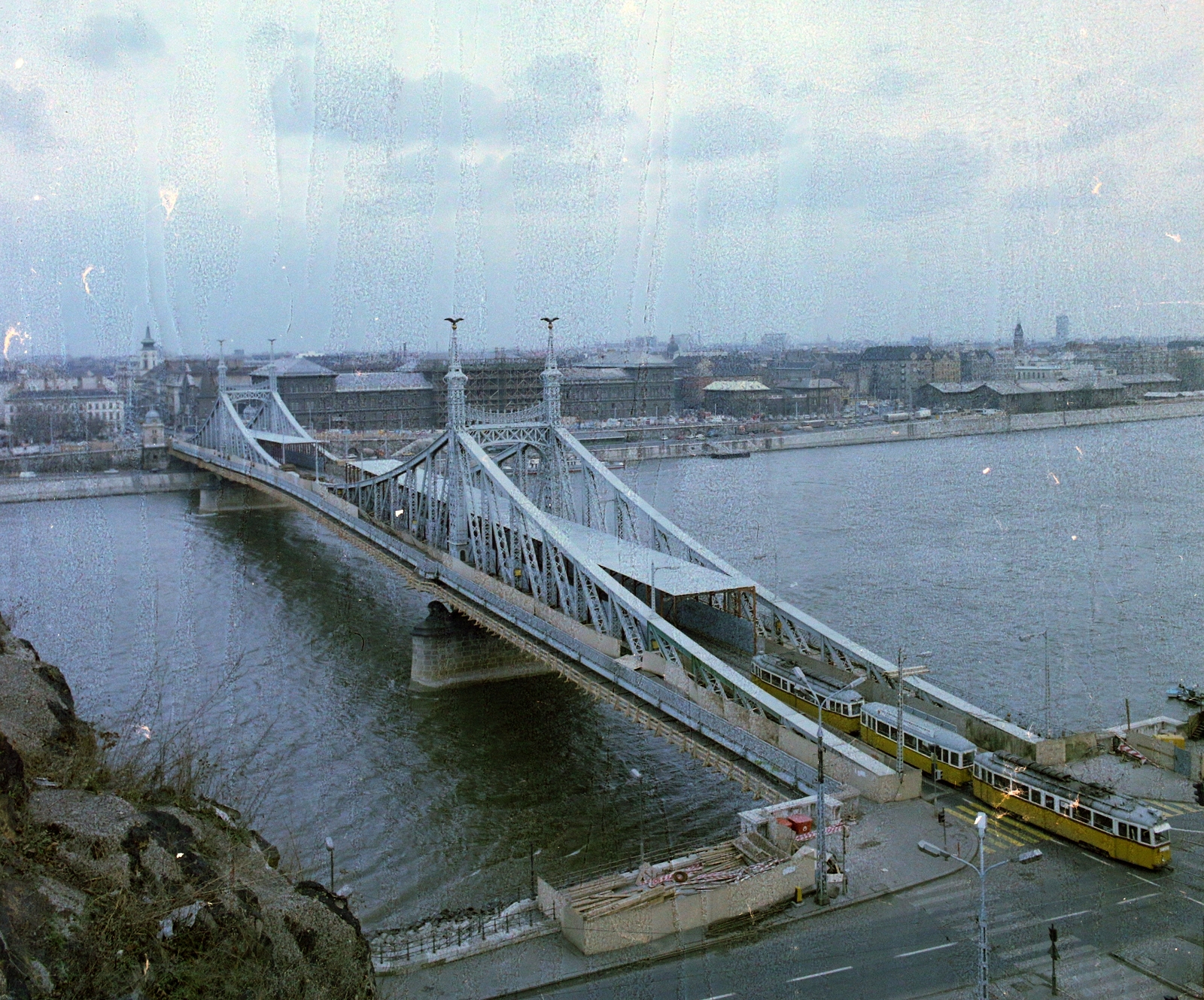 The bridge was repainted to its original green in the 1985-phase of the renovation (Photo: Fortepan, Uvaterv)
The bridge was repainted to its original green in the 1985-phase of the renovation (Photo: Fortepan, Uvaterv)
The renovation was completed in 1986, the finishing touches, including the last coat of paint, were completed alongside running traffic. Not only was the bridge repainted to a green colour that more closely resembled its original paint job, but the national coats of arms were also replaced. The enamelled national coats of arms were removed from the bridge in 1946. During the 1985–1986, the ministerial commissioner responsible for the renovation, Tibor Dalmy, decided to reinstate the historical coat of arms on the structure, surprising not only the public but the leaders of the then socialist state.
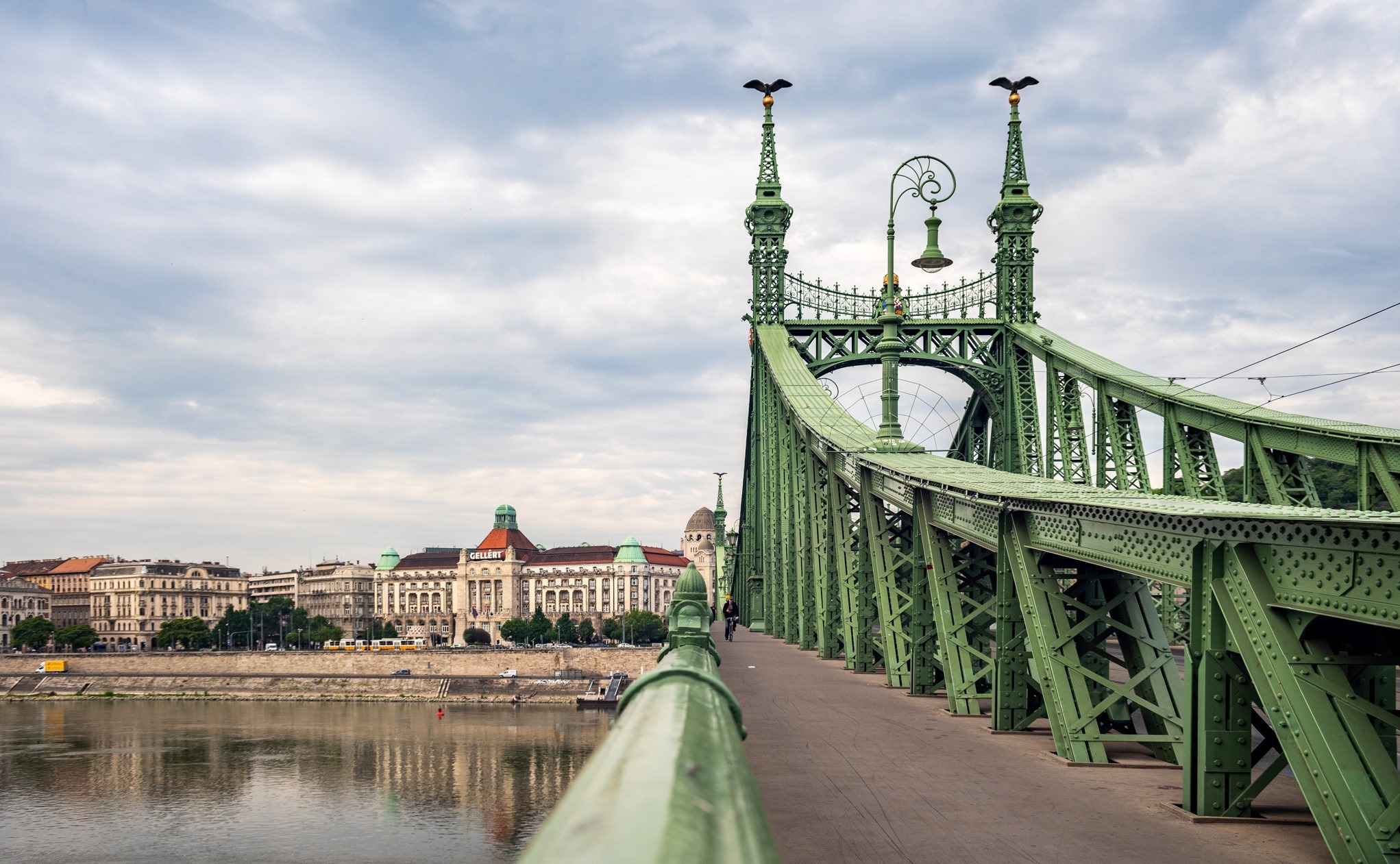 The bridge today (Photo: Balázs Both/pestbuda.hu)
The bridge today (Photo: Balázs Both/pestbuda.hu)
At the time, engineers calculated that the tram connection on the bridge would have to be closed within ten years. However, due to constant care and inspection, it survived tram traffic until a major renovation could take place in 2007–2008. The entire structure was reinforced, and all original ornaments returned to the structurally most unique bridge in Budapest, including the railings of the central span.
Cover photo: The bridge today (Photo: Balázs Both/pestbuda.hu)

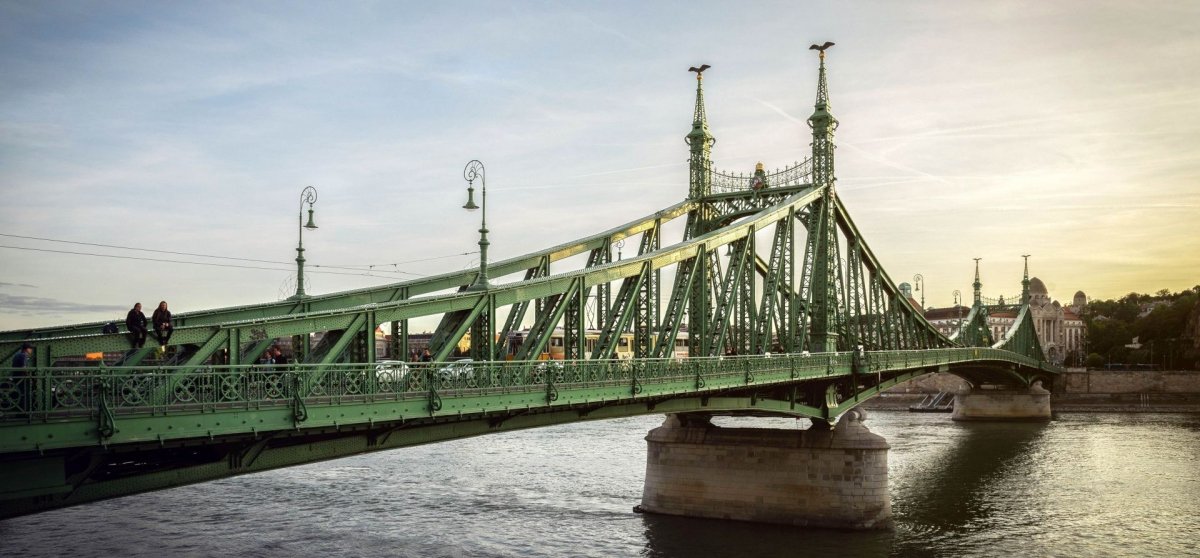



































Hozzászólások
Log in or register to comment!
Login Registration